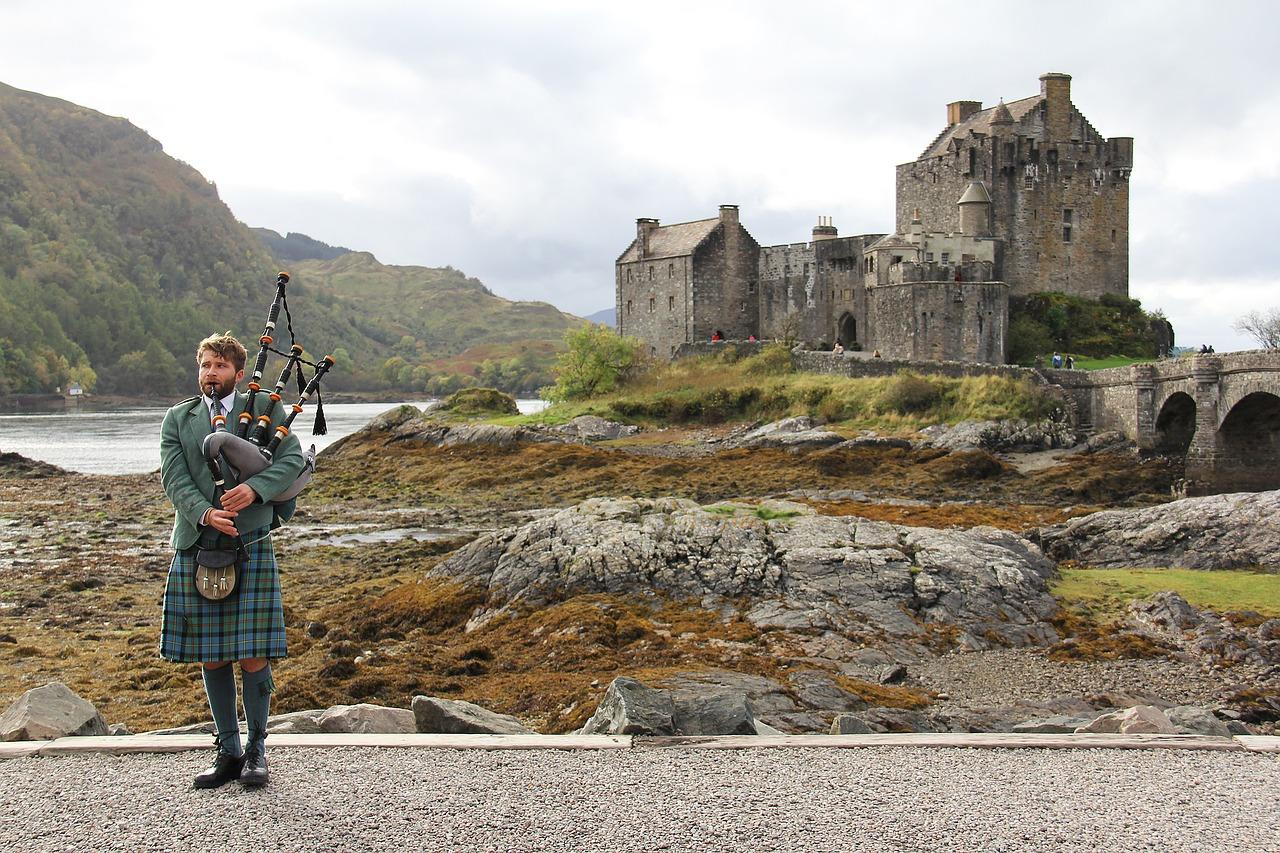Do you ever wonder where your Scottish last name came from? It came from a Scottish clan!
From the beginning of Scottish history, clan names came from the clan chiefs. Everyone in the same clan shared the same surname. This ensured that clan members were protected and it also showed solidarity.
By the 13th century, Celtic, Norse, and Norman-French had developed firm roots in the Highland of Scotland.
The term "clan" means children or family in Gaelic, but all clan members were not related to each other. The clans were tightly knit groups and lived off the land. Cattle was their main source of food and wealth. There were many border disputes in Scotland, which were left up to the important clan chiefs. At that time, chiefs were thought of as kings and protectors. They held the most power over the people and land.
This system was followed until about 1746 when the Battle of Culloden occurred. The Jacobites were defeated by King George II's troops, and some changes to the Scottish clan system immediately followed.
Northern and southern clans were communicating more with each other and even trading goods, which began to dilute the clan system. Thousands of Scottish people migrated to better land to find a new life, and some clans joined together upon arriving.
By using your last name, you can probably trace your family back to a specific part of Scotland. Origins of Scottish surnames are pretty cool and could even give you clues about what your ancient family members did for a living. Some surnames were given to common folk due to what their professions were. For example, if you were a brewer, your surname was Brewster, and you were a baker, your surname was Baxter. There were no spelling rules, so several variations of surnames could exist. For example, McNeill could also be spelled MacNeil, McNeal, or MacNeill. The way that Scottish history works are pretty interesting!
If you still want to learn more about Scottish clans, here are 7 facts about them that you probably didn't know!
1. The clan system and word clan is derived from the Gaelic word "clann"
The clan system was in existence by the 1100s, although there isn't an exact year where its origin is recorded. Historians agree that the Scottish clan system was in full swing during the 12th century, and that's when settlers from the north and south were forming "clanns." The English version is "clan."
2. Not all clans had chiefs
Although most clans had a chief, some did not. These clans were known as the Armigerous clans. Most of them did have a chief at one time, but he might have passed away or was killed. These clans either were dependent on another clan with a chief or were totally independent. Armigerous clans kept their original surnames even though they didn't have chiefs.
3. The concept of tartan representing a clan is derived from Queen Victoria
The tartan trend came into existence in the 18th century. Although it is true that different clans wore different colors, it is a little bit exaggerated when historians describe it. Truthfully, tartans were made from whatever materials were available at that time. Local trends also affected the colors of tartans. Queen Victoria was obsessed with Scottish garb, so this staple in the Scottish culture is really something that she created. During that time, tartans were made of two simple blocks of colors and a checkered pattern. Now, tartans can have a more complicated design. If you want to wear a traditional tartan to a wedding or other special event, stick with the pattern from the Queen Victoria era.
4. The idea that clans only existed in the highlands is a falsity of Victorian-era romanticism of Scottish culture
Clans did not just exist in the highlands. This misconception was created by romanticism. Clans existed all over Scotland and even moved around the country. Some migrated to avoid poverty while others migrated to find better land.
5. The "Red Wedding" episode of Game of Thrones is based on the slaughter of the MacDonald clan
This infamous Game of Thrones episode was based on a true-life event. The MacDonald clan was slaughtered because they were a few days late in swearing allegiance to King William. The creator of the show, R.R. Martin, says the episode was inspired by the Massacre of Glencoe, which took place in 1692. Captain Robert Campbell asked the MacDonalds to shelter him and him men, and of course, they agreed. The troops stayed with the clan for almost two weeks before they attacked them. This bloody event shows how serious the Scottish were when it came to honoring their kings.
6. The Campbell clan hated the MacGregors so much that they bred a special dog to hunt them
Not only did the Campbell clan publically behead the MacGregors, but they also bred a special dog to kill the clan more effectively. They forced MacGregor women to breastfeed these dogs from puppies because they believed the dogs would pick up the clan's scent more efficiently. They really went to extremes to ensure the destruction of the MacGregor clan.
7. The first prime minister of Canada was a Macdonald, and the second was a Mackenzie.
The names of Scottish clans branch out far into the world. In fact, there are as many MacDonalds residing in America as there are in Scotland. Canada has been heavily influenced by the Scottish people for centuries. Nova Scotia literally means "New Scotland" in Latin. Scottish culture is rich with a powerful history and respect for clans that have existed for thousands of years. If you and your family are Scottish, make a point to visit Scotland and see its beauty for yourself. When you travel to see the home of your ancestors and see their land for yourself, you will have a new appreciation for your own culture.













No Comments